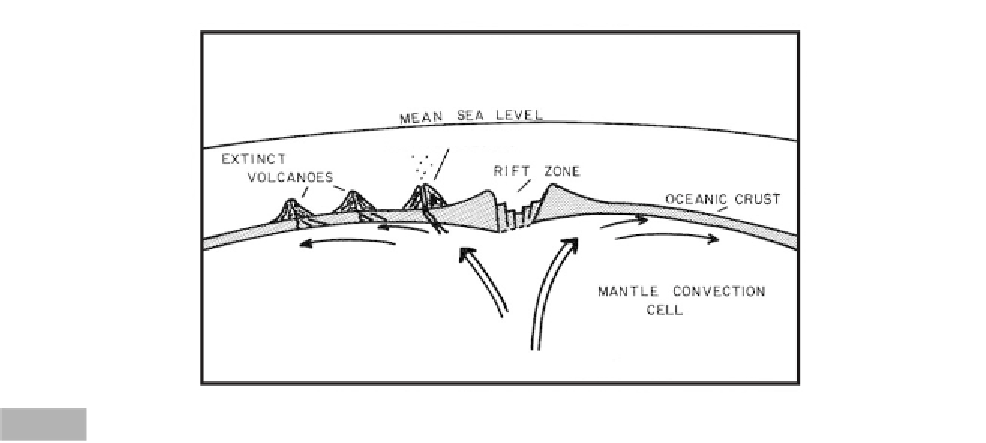Geoscience Reference
In-Depth Information
Australian continent. The data for Australia do not fit
a straight line because the most seismic part of this
continent is so isolated, with some events going
unrecorded. In any 100-year period, Australia can
expect an earthquake of magnitude 6.5 or larger. The
Meckering earthquake of 1968 and the Tennant Creek
earthquake of 1988 in fact exceeded this value. In the
last 75 years, there have been 18 earthquakes that
have exceeded 6 on the Richter scale. The 1 in 5-year
event has a magnitude of 5.8 on this scale. In contrast,
California can expect an earthquake in excess of 8 on
the Richter scale at least once in 100 years. Several
historical earthquakes, including the San Francisco
earthquake of 1906, have exceeded this value. In
California, the 1 in 5-year event exceeds 6.4 on the
Richter scale. The mean annual maximum earthquake
in California is about 0.5 orders of magnitude larger
than that in Australia. This difference becomes more
substantial when it is realized that California is about
one-twentieth the size of Australia.
This review on the distribution of earthquakes
emphasizes three facts. Firstly, while earthquakes are
most likely to occur along plate boundaries, the largest
earthquakes in terms of death toll and destruction have
not been associated with plate margins. Secondly, no
continent or region can be considered aseismic. Even
those that are perceived as being aseismic have a
remarkably high incidence of earthquakes above 6 on
the Richter scale. And finally, while a major damaging
earthquake is imminently expected along the San
Andreas Fault, major earthquakes have occurred in the
eastern part of North America, which if they occurred
near populated centers today would be just as destruc-
tive as expected ones in California.
CAUSES OF EARTHQUAKES
AND VOLCANOES
(Holmes, 1965; Bolt et al., 1975; Whittow, 1980; Wood,
1986; Ritchie & Gates, 2001; Matthews et al., 2002; Heki,
2003; Jones, 2003)
Plat
e boundaries
Most volcanism occurs along the plate boundaries in
subduction zones, and along lines of crustal spreading
such as the mid-Atlantic ridge. The theory of conti-
nental drift states that the crust in the center of oceans
spreads because of diverging convection cells in the
mantle. These cells rise towards the Earth's crust and
spread out at the surface, resulting in a ridge with a rift
in the middle (Figure 9.4). This rift is infilled with
molten mantle material, which at weak points or frac-
tures can form volcanoes. As the crust continues to
spread apart, volcanoes migrate away from the center
of the ridging. If conduits joining the volcanoes to the
magma pool can remain open, then the volcanoes will
remain active. However, if the crust spreads faster than
lava
can be fed to the volcano, the conduits block,
the volcano becomes extinct, and newer ones develop
closer to the rift.
Where plate boundaries are colliding, a different
process occurs. Part of one plate may be driven
beneath another (Figure 9.5). This plate drags down
with it crustal material and forms a trench. The crustal
Mea
n sea
Active volcano
Rift zone
Extinct
volcanoes
Oceanic crust
Mantle convection
cell
Origin of volcanism associated with mid-ocean plate spreading.
Fig. 9.4









